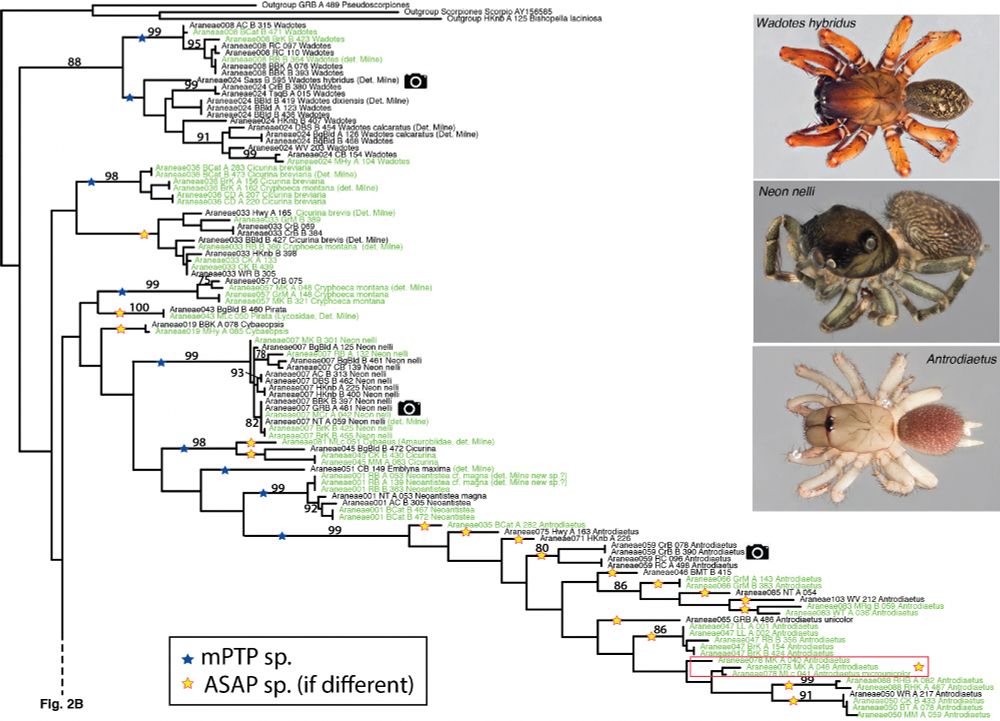
Our trip to Okefenokee NWR has already resulted in a re-discovery of a long-lost species. Ceratinopsis bona Chamberlin & Ivie, 1944 was last seen in 1943, 82 years ago. In addition to possessing genitalia that match the descriptions, their black tibia IVs are also diagnostic.


Our trip to Okefenokee NWR has already resulted in a re-discovery of a long-lost species. Ceratinopsis bona Chamberlin & Ivie, 1944 was last seen in 1943, 82 years ago. In addition to possessing genitalia that match the descriptions, their black tibia IVs are also diagnostic.





















This is also likely the most species-rich phylogeny (although just COI-based) of linyphiids yet published!
doi.org/10.1636/JoA-... (if paywalled write me for pdf)




This is also likely the most species-rich phylogeny (although just COI-based) of linyphiids yet published!

I hear people sometimes think spiders look like ticks and usually it seems a bit silly to me, but in this case I can make an exception.
Ceratinella parvula (Araneae, Linyphiidae) from Eagle Marsh, IN.
#arthropod #taxonomy #pregnancy

I hear people sometimes think spiders look like ticks and usually it seems a bit silly to me, but in this case I can make an exception.
Ceratinella parvula (Araneae, Linyphiidae) from Eagle Marsh, IN.
#arthropod #taxonomy #pregnancy






This reminds me of our recently published study with @sderkarabetian.bsky.social of fictional spiders portrayed in the Magic: The Gathering card game: virginianaturalhistorysociety.com/wp-content/u...
This reminds me of our recently published study with @sderkarabetian.bsky.social of fictional spiders portrayed in the Magic: The Gathering card game: virginianaturalhistorysociety.com/wp-content/u...




